Archie Brennan (1931 – 2019) was a master of modern tapestry, who has had a profound influence on the direction of the medium on an international level. Dovecot Studios and National Museums Scotland are collaborating on a research project to examine Brennan’s life and work. This research, combined with study of the collections at National Museums Scotland, will inform the creation of a brand new tapestry currently being woven at Dovecot Studios.

Archie Brennan began his career as an apprentice at Dovecot Studios (formerly the Edinburgh Tapestry Company) in 1947 aged just 16. He went on to study at Edinburgh College of Art, establishing the first tapestry course in Scotland in 1962; during this time he also took on the role of artistic director of Dovecot, a position he would hold until 1977. During Brennan’s directorship of Dovecot, the Studio completed ambitious commissions for churches, airports, government and corporate buildings, and worked with leading artists including Eduardo Paolozzi, Harold Cohen, Robert Motherwell and Louise Nevelson. Brennan went on to establish the Australian Tapestry Workshop (formerly the Victorian Tapestry Workshop) in Melbourne and taught at the National Arts School in Papua New Guinea (where he also designed the architectural decoration for the newly established parliament), before permanently relocating to New York.

Brennan’s work has spanned multiple incarnations, themes, and continents. Indeed his work is hard to pin down but a constant thread (forgive the pun) that runs throughout his career is his commitment to furthering the cause of classical tapestry weaving. The following statement from the American Tapestry Alliance gives some insight into Brennan’s approach to his work:
“Quite simply the practice of woven tapestry has been an obsessive passion my entire adult life. It is my creative language, and I love-hate-delight- and struggle with it each day, all day. In a unique manner it is a vehicle to convey concept, comments, harmony, discord, rhythm, growth and form. Simply put, it is what I do. That tapestry today is widely regarded as a minor art form leaves me unconcerned. This is someone else’s problem. In medieval Europe, pre-Columbian Peru and Coptic Egypt, tapestry was supreme. Five hundred years ago it was already extremely sophisticated- aesthetically, technically and in diversity of purpose. Today its lack of defined purpose – its rarity – gives me opportunity to seek new roles, to extend its historic language and above all to dominate my compulsive drive.”
Archie Brennan
In the summer of 2018, my research partner Kate Grenyer (Dovecot Exhibitions Curator) and I had the privilege of meeting Archie and learning about his life and work. Archie and his partner, fellow tapestry weaver Susan Martin Maffei, could not have been more generous with their knowledge and good humour.
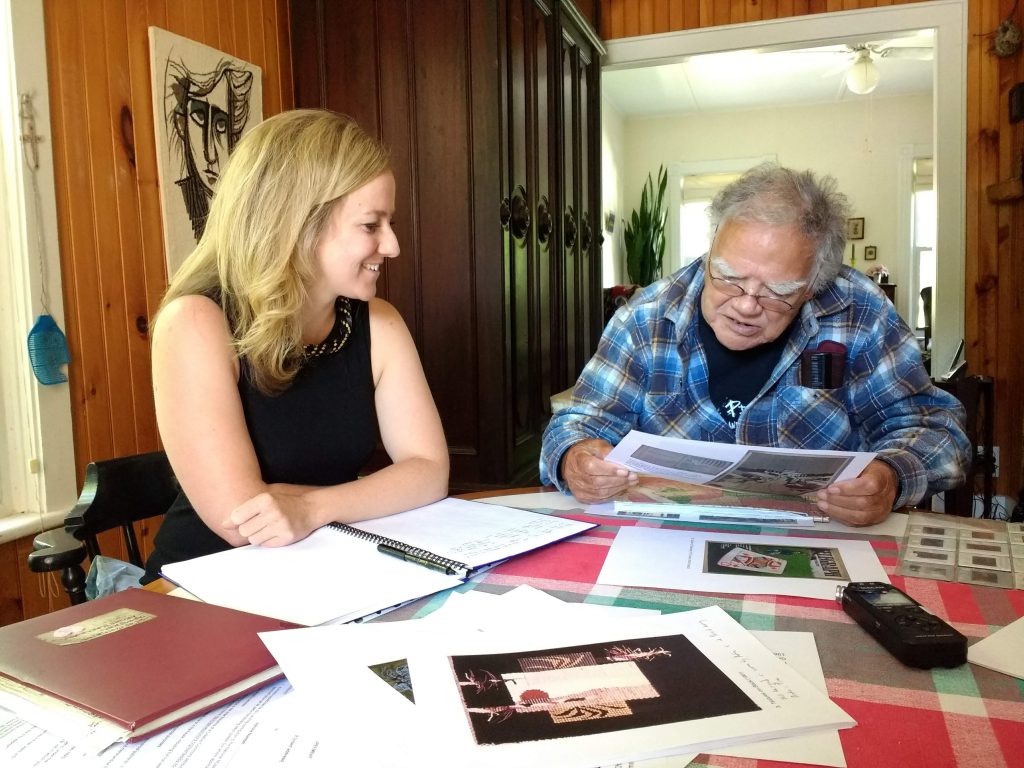
This research was generously supported by the Art Fund’s Jonathan Ruffer Curatorial Grant and will inform a retrospective of Archie’s work, which will take place at Dovecot in spring of 2021.
This project has taken many surprising twists and turns and I now find myself showing the weavers at Dovecot Studios works by Brennan in the collection at National Museums Scotland to inform the creation of a brand new tapestry, made possible through Creative Scotland’s Open Project Funding.
One of the things that I have learned about Archie through this research process is his commitment to arts education. After establishing the tapestry department at Edinburgh College of Art and running Dovecot Studios, Archie relocated to North America in 1983 to focus solely on his own tapestry practice. Archie found teaching again, or perhaps more accurately teaching found Archie. He began teaching tapestry when requested and this led to a regular series of workshops spanning 30 years.
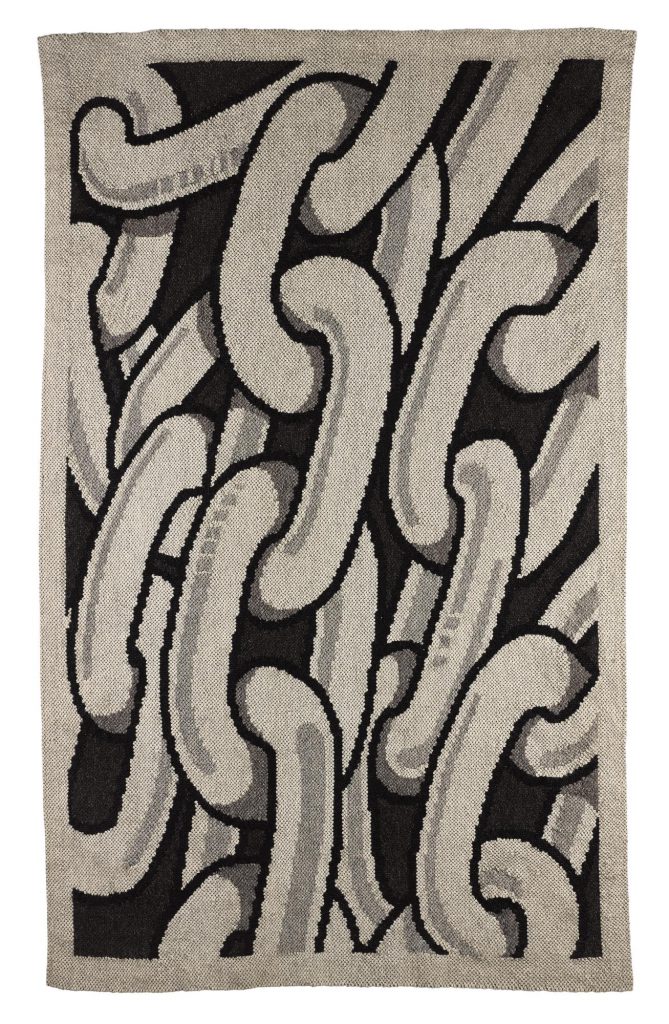
In a 2007 article reflecting on teaching in North America, Archie noted that there was a lack of tapestry workshops in America and production of tapestries was often outsourced to the more traditional weaving centres of Europe. He also observed that ‘Navaho weaving has a long tradition of handing down skills to the extended family that have been fiercely maintained in order to preserve an important part of Navaho culture’. Brennan and Maffei wished to teach tapestry at a ‘grassroots level’, expanding the knowledge and skills of tapestry weaving across America by teaching small groups, with the overall aim of promoting the craftsmanship and appreciation of the medium.

The current weavers at Dovecot are the first generation not to have benefitted directly from Archie’s teaching and the study of his work in the collection at National Museums Scotland has proved to be an innovative way to address this. Through my conversations with the weavers and by looking closely at the works I have come to understand these tapestries in a completely different way, quite apart from historical research. The following images demonstrate how the weavers have been learning from Archie by responding to his work on the loom:
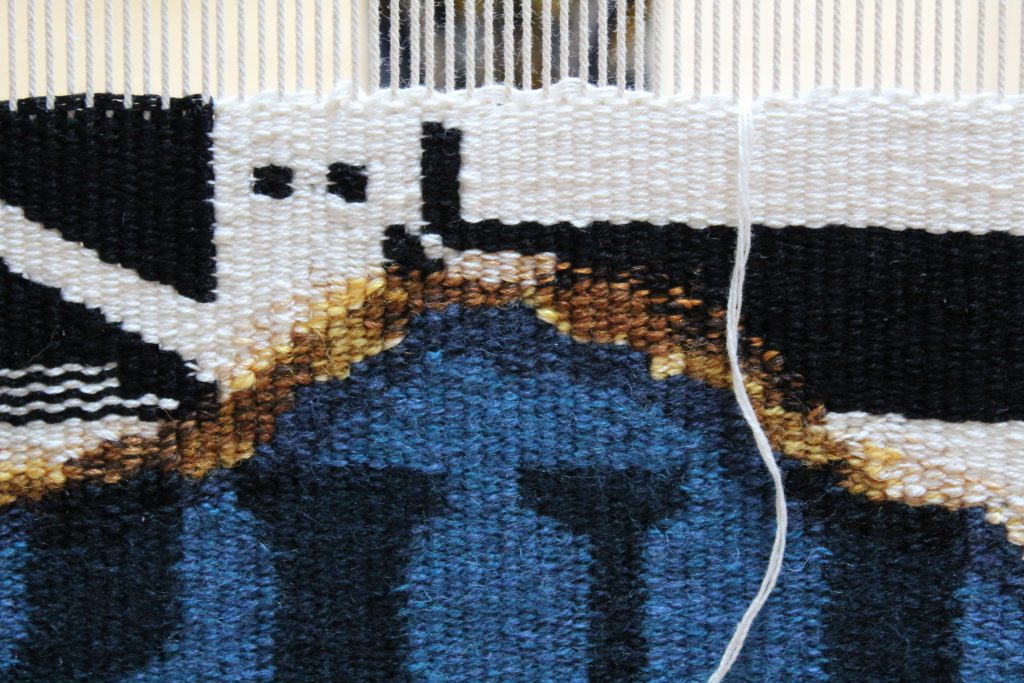
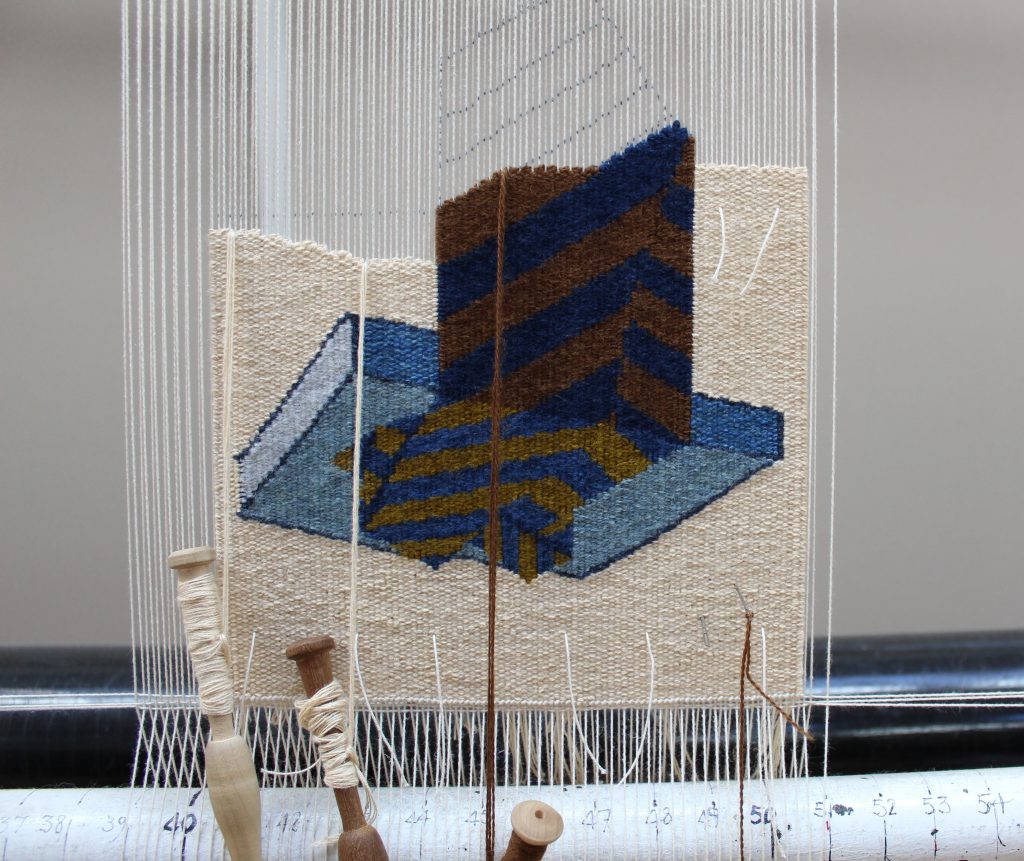

For the direction of the new tapestry commission, the weavers have been guided by Archie’s idiosyncratic approach. In 2012 Archie was invited by Jack Lenor Larsen to contribute to an exhibition entitled ‘Sourcing the Museum’, which was held at the Washington Textile Museum. This exhibition invited contemporary practitioners to respond to objects in the permanent collection at Washington. As a conceptual experiment, Archie chose three textiles at random from the Museum’s database and combined them in a work irreverently entitled ‘Sharing a Warp’. Curator Jack Lenor Larsen wrote in the catalogue that:
“Archie Brennan, the undisputed master of modern tapestry, has deviated from neither his material not craft. Rather, he has, by combining these traditions in one piece, demonstrated the concurrence of diverse textile manifestations. Because this work is within the time-worn traditions and his own life work, the craftsmanship is impeccable, familiar, and durable.”
Jack Lenor Larsen
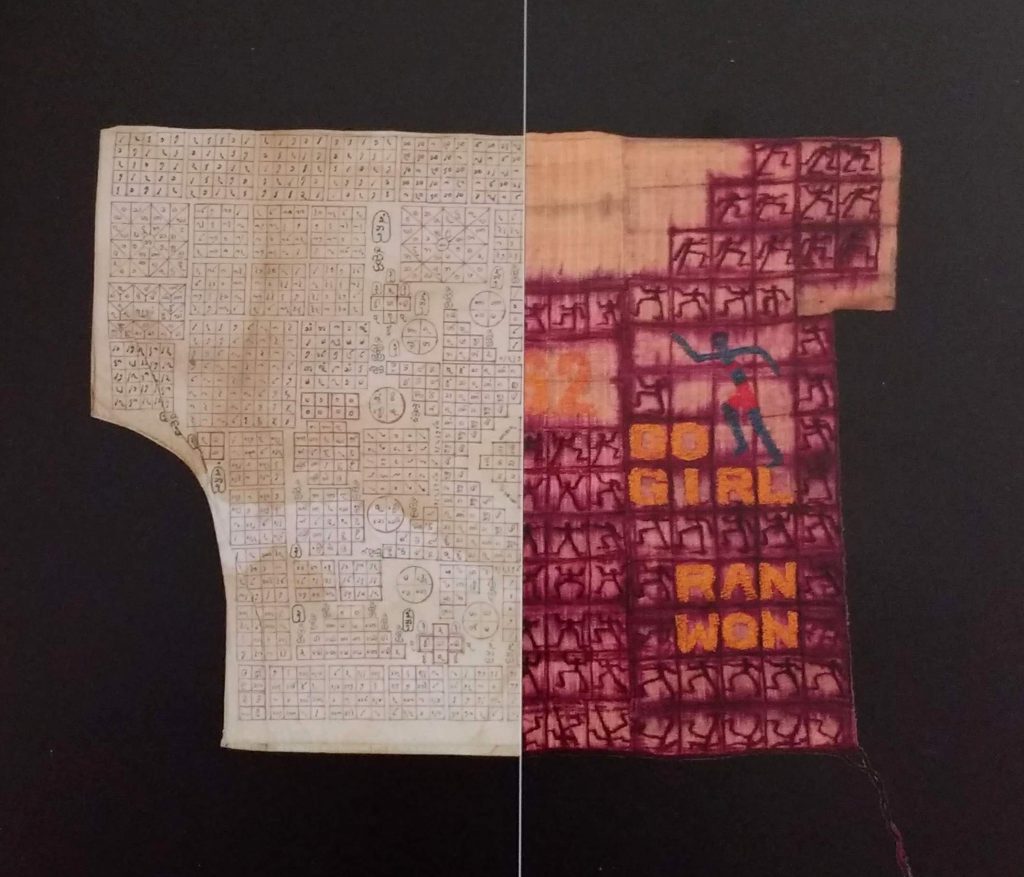
Image courtesy of Archie Brennan estate
In our quest to create a new tapestry that is similarly impeccable, familiar and durable, we have taken our cue from Archie and chosen a group of textiles, completely at random, from the collections at National Museums Scotland. These pieces form the basis of two tapestries designed by Dovecot weaver Ben Hymers and apprentice weaver Elaine Wilson. The entire weaving team at Dovecot will work on the creation of these new tapestries and in doing so will continue Archie’s legacy. Here is a sneak peek at the tapestries in their present incarnation.
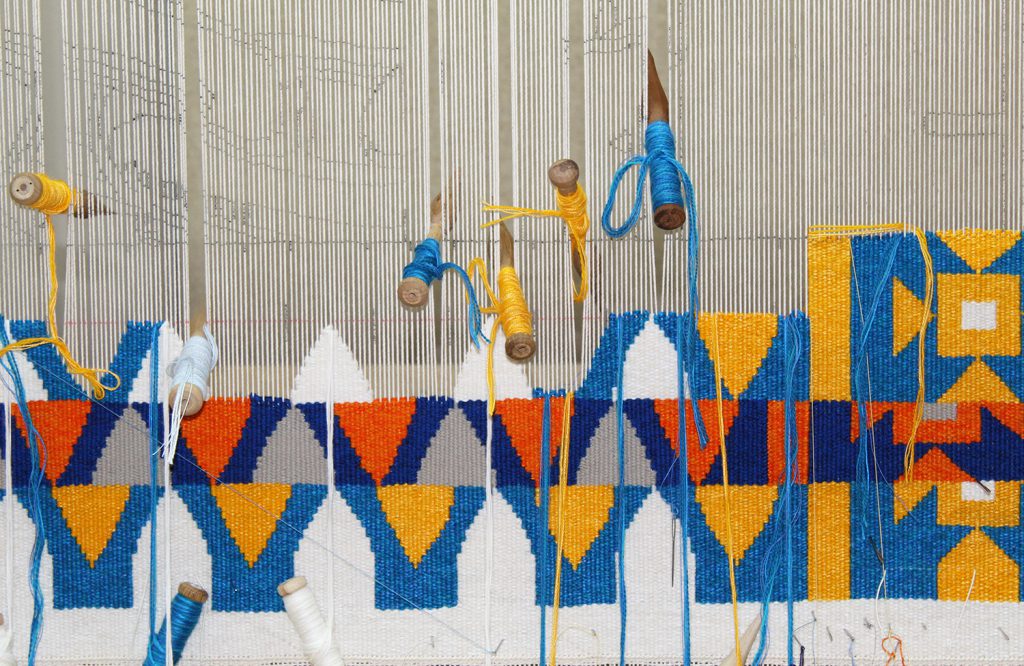

Popping into Dovecot Studios as often as is socially acceptable has given me the opportunity to watch these new works, underpinned by a combination of research and object-based study, evolve on the loom and I for one cannot wait to see the finished tapestries.
To learn more about this project please join myself and Naomi Robertson, Dovecot Master Weaver and Studio Manager, at the Symposium: Museums and Contemporary Craft.
